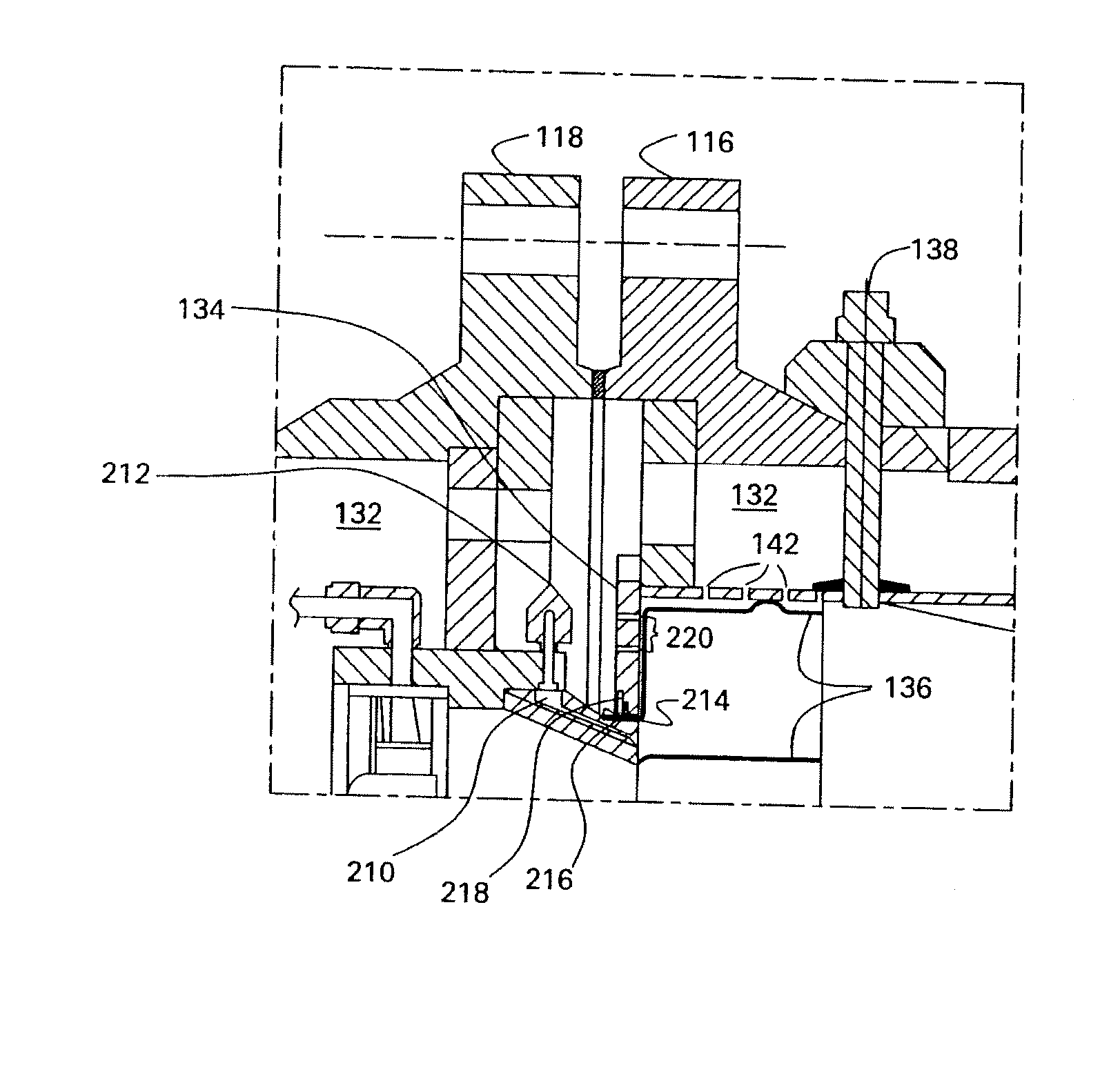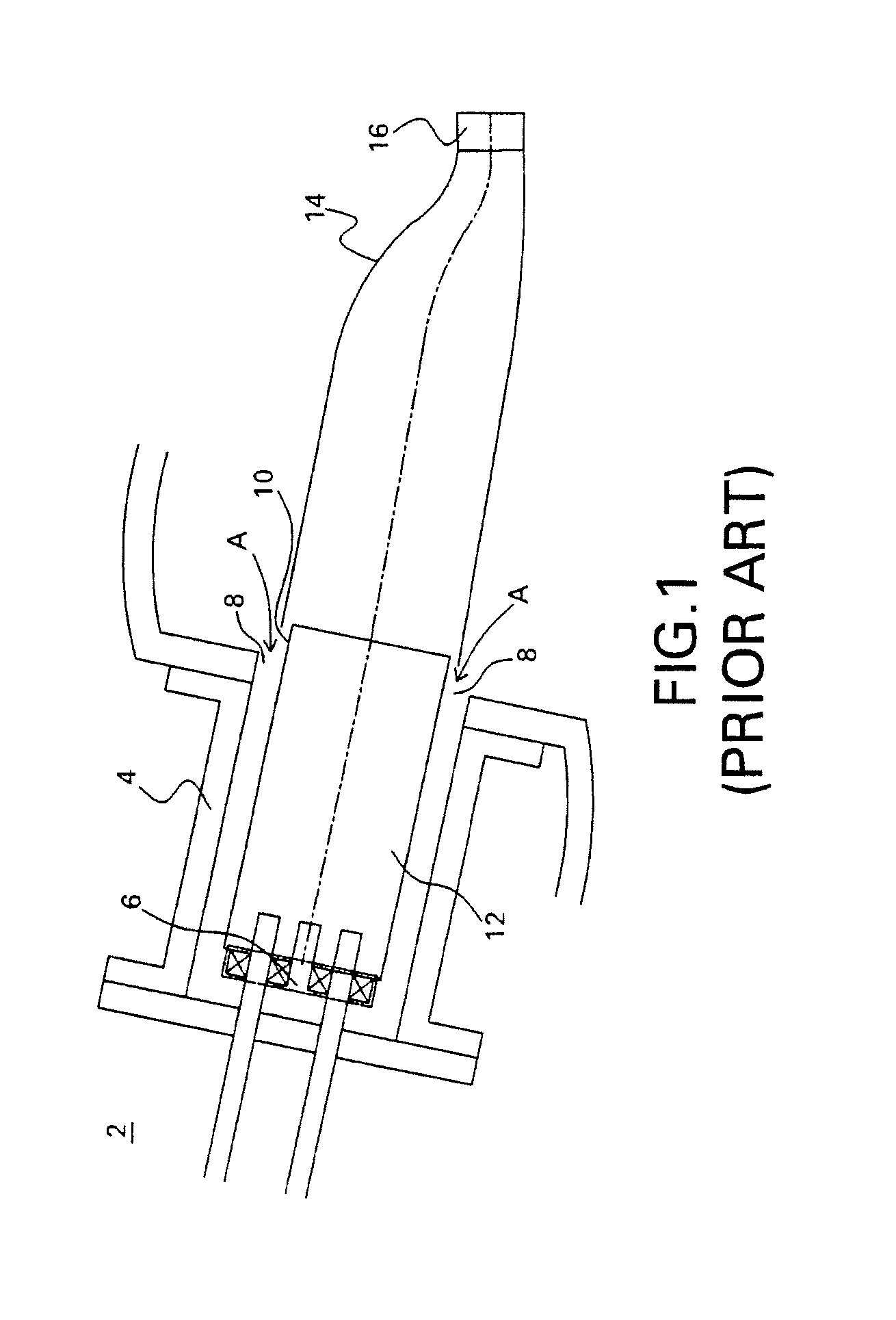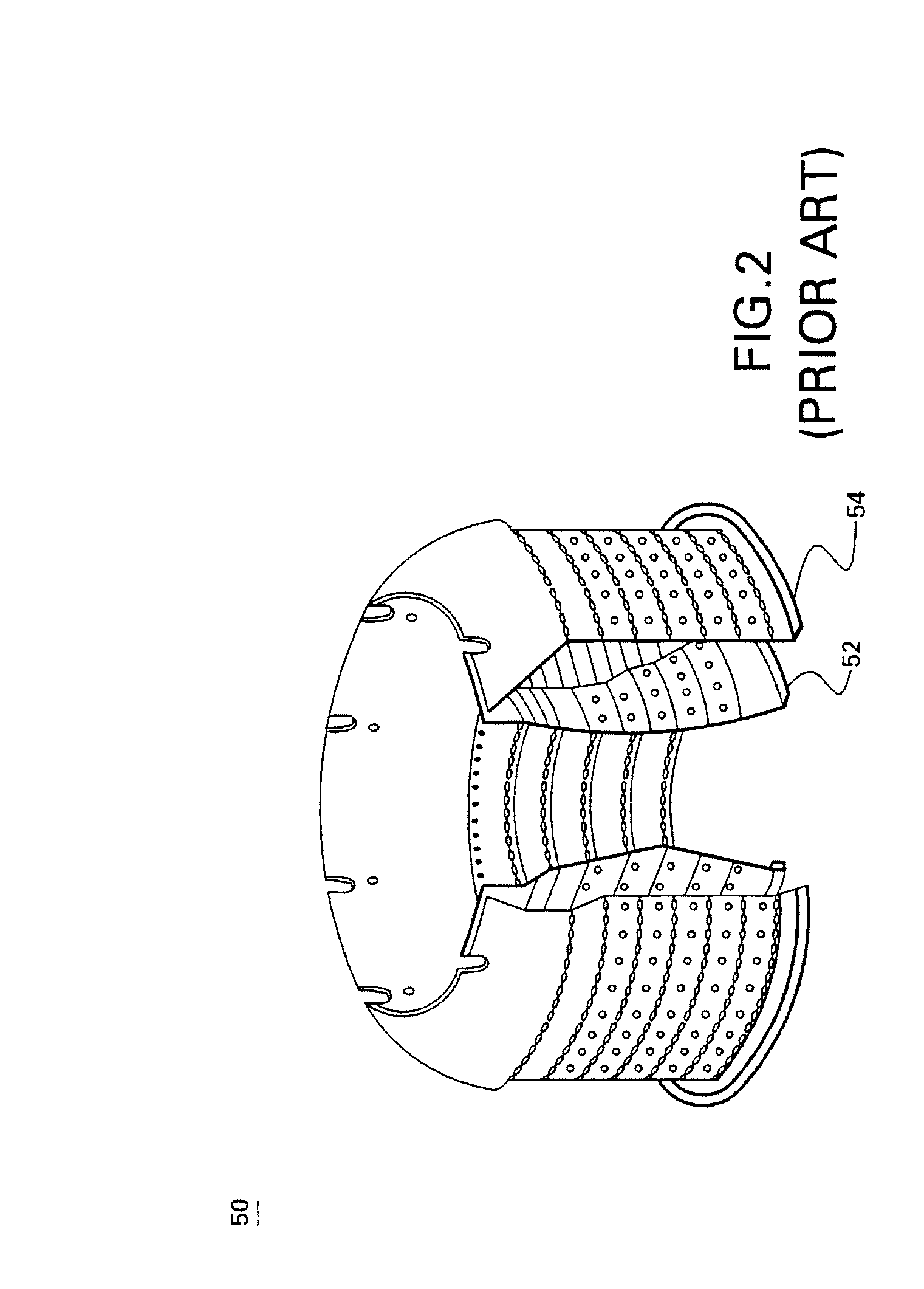Method and apparatus for reducing gas turbine engine emissions
a gas turbine engine and emission reduction technology, applied in the direction of engine ignition, engine starters, lighting and heating apparatus, etc., can solve the problems of low emissions and maximum operability, long prior art can-type combustors, and nitrogen oxide formation within gas turbine engines. , to achieve the effect of reducing emissions
- Summary
- Abstract
- Description
- Claims
- Application Information
AI Technical Summary
Benefits of technology
Problems solved by technology
Method used
Image
Examples
example 1
[0049] In this example, emissions were monitored for a turbine shown in FIG. 3 employing a can type combustor in accordance with the present disclosure. Emissions were monitored at various points across the combustor liner during operation of the microturbine at full speed and, full load (FSFL). As is graphically shown in FIG. 11, a NOx emission was less than about 3 parts per million (ppm) across the entire combustor liner. Although the residence time in the can type combustor is relatively long compared to annular type combustors, the independently operated premixers employed in the can type combustors provides a robust process with minimal NOx emissions and minimal dynamic pressure fluctuations. Levels of carbon monoxide at FSFL averaged less than about 10 ppm across the combustor liner. During low load and / or low temperature operation, the levels of carbon monoxide (CO) and unburned hydrocarbons are expected to be minimal due to the compact flame structure and long combustor res...
PUM
 Login to View More
Login to View More Abstract
Description
Claims
Application Information
 Login to View More
Login to View More - R&D
- Intellectual Property
- Life Sciences
- Materials
- Tech Scout
- Unparalleled Data Quality
- Higher Quality Content
- 60% Fewer Hallucinations
Browse by: Latest US Patents, China's latest patents, Technical Efficacy Thesaurus, Application Domain, Technology Topic, Popular Technical Reports.
© 2025 PatSnap. All rights reserved.Legal|Privacy policy|Modern Slavery Act Transparency Statement|Sitemap|About US| Contact US: help@patsnap.com



